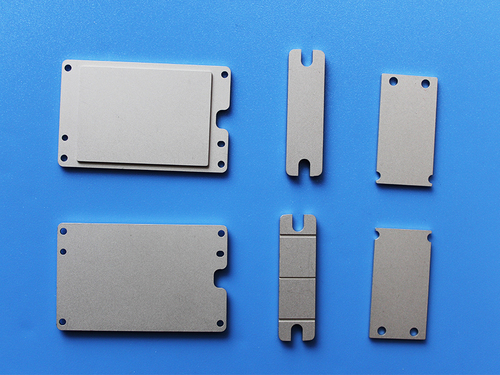Copper is widely used in electronic packaging due to its excellent electrical and thermal conductivity. However, its high coefficient of thermal expansion often necessitates combining it with materials with low coefficients of thermal expansion, such as molybdenum.
However, existing methods for preparing copper-molybdenum-copper composite materials (CMC) suffer from drawbacks such as high explosion risk, severe environmental pollution, and poor mechanical properties. To address this issue, researchers employed a high-temperature solid-state composite method to prepare this material. The specific steps are as follows:
(1) Rolling molybdenum plates obtained through powder metallurgy to the required thickness and then performing high-temperature annealing to remove internal stress;
(2) Rolling copper plates to the required thickness according to the desired copper-molybdenum-copper thickness ratio and then performing high-temperature annealing to remove internal stress;
(3) Cutting two copper plates and one molybdenum plate to the same size according to the required dimensions;
(4) Using fine sandpaper… (5) Grind the surface of the copper plate to remove the oxide layer;
(6) Immerse the resulting plate in industrial degreasing solution for 5 minutes, remove and wipe clean, wash again with ethanol, and dry;
(7) Alternately stack the molybdenum and copper plates and apply a pressing block;
(8) Push the stacked plates into a hydrogen furnace for heating at a rate of approximately 5°C/s, a holding temperature of approximately 100°C, and a holding time of approximately 100 minutes;
(9) Cool the product in the furnace, maintaining it in a hydrogen atmosphere throughout the cooling process. Remove the product once it has cooled to below 100°C.
The advantages of this production technology are:
1) The product is produced in a hydrogen furnace, resulting in no oxidation or other harmful substances forming at the composite interface, leading to high interfacial bonding strength;
2) The rolling process is easy to control, resulting in a high yield, and the thickness of the layered composite material can be adjusted arbitrarily, thus meeting the needs of different fields and products.
Compared to tungsten copper and molybdenum copper, CMC has lower density, better thermal conductivity, and a more compatible coefficient of thermal expansion. Therefore, CMC was initially developed for military and aerospace applications. However, with the increasing demands for material performance, the new generation of SCMC (super copper-molybdenum copper) is now entering the market in large quantities.
Post time: Nov-25-2025


